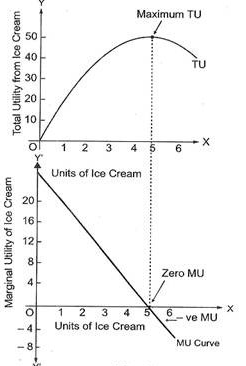Core Concept 4: Marginality
25th August 2015
Marginality is a key to understanding microeconomics because rational economic man takes decisions at the marginal level – at the level of a very small change. For example, I consume ice cream until I am full, where ‘full’ means the last spoonful still satisfies my desire but I do not want one more spoonful.
“The general theory of economic equilibrium was strengthened and made effective as an organon of thought by two powerful subsidiary conceptions — the Margin and Substitution. The notion of the Margin was extended beyond Utility to describe the equilibrium point in given conditions of any economic factor which can be regarded as capable of small variations about a given value”. John Maynard Keynes, General Theory
Marginal as a mathematical idea
Marginals then measure the effect of one very small change on another variable – and below we summarise the major uses of marginal concepts in economics. But a marginal is also the differentiation of a total curve in mathematics.
MUx = change in total utility of X
change in price of X
The marginal value is the slope (differentiation) of a total curve
This means that even if we are not mathematicians, we can see the relationship  between totals and marginals by just looking at a total curve, (see diagram)
between totals and marginals by just looking at a total curve, (see diagram)
Slope of total curve is rising = marginal values are positive and increasing.
Slope of total curve is rising less steeply than a 45 degree line = marginal values are positive but falling.
Point where total curve is at its peak = marginal value is zero.
Total curve is sloping downwards = marginal value is negative.
Marginal utility and demand
Generally a demand curve slopes downwards from left to right, showing that as price falls, more of a good or service is bought. The downwards slope can be explained by the
Principle of Diminishing Marginal Utility
As more of a product is consumed, the marginal utility of the next unit is lower than the previous one. We are getting utility (satisfaction) but less satisfaction than the first one. Think again of a large bowl of ice cream on a hot day – the first spoonful gives us lots of satisfaction but after twenty spoonfuls, well to be honest we are feeling a bit sick (the marginal utility is negative – if we keep on going we feel sicker and sicker).
In a market of many ice cream consumers the downward price reflects the lower marginal utility some consumers place on ice cream when compared with a substitute good (like a cold drink). the rule here is that consumers will choose between ice cream and cold drinks until the
Ratio of the marginal utilities of both products to their prices is identical.
MU1 = MU2
____ ____
P1 P2

0 Comments